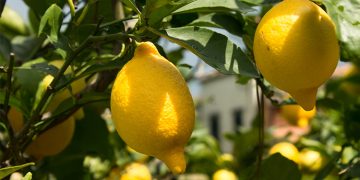Turkey is one of the unique countries in the world for agricultural production and the Turkey’s matchless superiority with respect to agricultural production allows her to produce many agricultural products.
Except for some tropical products, almost every kind of agricultural product can be produced on a large scale in Turkey. Dried fruits are one of Turkey’s major agricultural sectors and Turkey is the most important country in the world with respect to both the production and export of dried fruits. Turkish dried fruits’ production and exports are extremely high and dominate world markets. Among the dried fruits produced in Turkey, raisins (sultanas), dried apricots and dried figs have the lion’s share. Because of their major importance for agricultural exports, they are regarded as traditional Turkish agricultural export items. Turkey also produces and exports other kinds of dried fruits such as prunes, currants, dried apples, dried pears, dried mulberries, dried peaches etc,
Dried fruits, nutrition and health
Grapes, figs and apricots are miracles from the standpoint of their composition and have been accepted as sacred fruits throughout history. Dried fruits are called nature’s candy and they are one of the most nutritious fruits in the world.They are cholesterol free, rich in vitamins and minerals, and totally fat free.
Dried fruits are a good source of fiber and also rich in antioxidants.
Dried fruits are invaluable for human health and provide consumers many advantages with respect to nourishment. Dried fruits, with many of the major vitamins and minerals in their composition, are found to be useful in many functions of the human body, some of which are as follows:
* Regulation of the functioning of the brain, giving energy and helping to release stress, helping in the recovery of the liver, known to be the most important organ for storage and waste disposal in the body,
* Playing an important role in keeping the bones and teeth healthier and stronger,
* Prevention of anemia by increasing blood production, In addition to playing an important role in the therapy of ulcers, they also prevent the formation of stomach and intestinal ulcers,
* Decreasing the formation of kidney stones,
* Providing a regulatory role in the reproduction system,
* Acting as a cancer preventative,
* Making cardiac muscles stronger and the functioning of the heart more regular,
* Helping child growth, curing diseases with inflammation and fever, as well as kidney and liver diseases,
* Treating skin pigmentation diseases.
Consumption forms of dried fruits
Dried fruits are widely used in the food sector as well as being consumed as a snack,
Some consumption forms of dried fruits are as follows:
Raisins (Sultanas)
Raisins are an indispensable ingredient in breads, cakes, cookies, pies, tarts and different pastries in the bakery sector. They are an excellent addition to a wide range of candies, puddings and other wonderful confectioneries. They are mixed or added to many cereals and cereal based products like muesli logs, fruit filled cereals, nuggets and extruded breakfast cereals. They are also delicious sweeteners and texturizers in different types of yogurt, ice creams and even in some types of cheese.
Dried Apricots
Dried apricots are mostly consumed directly as a snack after being graded and may be mixed with other fruits, It is also used in bakery products, in the production of chocolate and candies, and as an ingredient in the preparation of some special sweets, like paste, The juice made from dried fruits by boiling them in water can also be consumed as refreshment after cooling the juice.
Dried Figs
Dried figs are consumed in international cuisines in many different forms including in pies, puddings, cakes, bread or other bakery products after being stewed or cooked; in jams, marmalades or in many sugar and confectionery products as a delicious ingredient. Dried figs have become an increasingly important due to their advantages with both industrial users and individual consumers such as longer shelf life, more concentrated taste, higher economic value and ease of use in almost all of the above mentioned areas of consumption compared to their use in fresh form.
PRODUCTION
Raisins (Sultanas)
Turkey has 1200 different types of grapes and has been among the five major producers of grapes throughout the world with an annual average production of about 4,1 million tons. Among these varieties, seedless “Yuvarlak and Sultani” are the main varieties used for raisins, Seedless raisins are grown especially in the Aegean Region of Turkey, which is blessed with some of the most fertile land in the world, plenty of sunshine and abundant water supplies.
The original name of the famous seedless Turkish raisins, “Sultana, Sultanna, Sultanine”, comes from the fact that they were served at the Ottoman Sultans’ magnificent tables during the times of the Ottoman Empire.
About 60 % of the total production in this region is seedless,Depending on foreign demand, the tendency in Turkey is towards more production without reducing quality. This has been realized both by increasing viticulture areas throughout the country and utilizing modern viticulture techniques to increase the yield, Raisin production in Turkey totaled 287 thousand tons in 2012, and with this figure Turkey accounts for nearly 23% of total world raisin production.
Turkish Raisin Production
(Quantity: Tons)
Years Quantity
2000 255,000
2001 255,000
2002 200,000
2003 215,000
2004 280,000
2005 250,000
2006 274,000
2007 240,000
2008 310,000
2009 274,000
2010 248,547
2011 268,949
2012 286,575
Source: International Nut and Dried Fruit Foundation (INC)
Dried Apricots
Turkey is at the top of the fresh and dried apricot producing countries with approximately
638 thousand tons of fresh and 137 thousand tons of dried apricot production in 2011.Turkey alone meets nearly 18 % of the fresh apricot production and nearly 74 % of thedried apricot production in the world.
Turkish Dried Apricot Production
(Quantity: Tons)
Years Quantity
2000 88,000
2001 98,000
2002 63,000
2003 94,000
2004 80,500
2005 139,000
2006 90,000
2007 98,000
2008 120,000
2009 100,000
2010 95,000
2011 136,917
2012 176,718
Source: International Nut and Dried Fruit Foundation (INC)
Apricot cultivation, which is spread across most of the agricultural regions of Turkey, findsits best environment in the Central Eastern Anatolian Region where nearly half of thecrops are produced.
Due to the ecology of the province, apricots from Malatya have gained economic value inthe form of dried apricots for years. Almost all of the fresh crop in this district is subject tothe drying process and nearly 90-95 % of the dried apricots produced, is exported.
Dried Figs
Although dried fig production may show variations between 45-60 thousand tons accordingto annual climatic conditions. Turkey ranks as the world’s largest supplier of fresh anddried figs, Turkey realizes 24 % of the world’s fresh fig production and over half of theworld’s dried fig production.
Turkish Dried Fig Production
(Quantity: Tons)
Years Quantity
2000 49,001
2001 48,028
2002 52,462
2003 54,571
2004 55,631
2005 56,327
2006 60,393
2007 43,500
2008 42,500
2009 50,000
2010 58,662
2011 55,500
2012 56,900
Source: International Nut and Dried Fruit Foundation (INC)
Although different types of fig varieties are grown throughout Turkey, the “Sari lop” varietywith its large size, sweet, fleshy, light colored character and soft skin is the main variety fordried figs, This variety, which is preferred by most of the world’s countries for its quality, isproduced only in the river basins of the Big and Small Menderes Rivers in the AegeanRegion.
Fig production is realized principally in Aydin and Izmir provinces over a large area. This isa family business, as it requires an intensive human labor in the field when collecting thefigs from trees, selecting, sorting, screening and further processing the figs into differentforms.
After processing, figs acquire export names such as layer, protoben, pulled, lerida, locum,garland, macaroni, baglama, cukulata, and umbrella based on their shapes.
Drying improves both storage life and the food value of the fig, Fresh figs contain 80%water and 12% sugar, however, when dried, the sugar content rises to 50%.
Turkish dried fruits are grown under natural conditions, harvested and dried undercontrolled conditions. They are graded, stored and packaged and packed in hygienicconditions following the strict rules of internationally accepted quality control systems.
Regarding the safety of production, before being processed in the factories dried fruits aresubject only to scientific and international treatments.
In Turkey, organic farming, which started in 1985, has shown a tremendous progress andthe dried fruits sector was the pioneer. Dried fruits still hold an important share amongorganic agricultural products and today 45% of the organic farmers are in the dried fruitbusiness. Nearly 15% of dried apricots, more than 5% of raisins and around 20% of driedfigs are produced by organic methods. The demand for organic fruits comes primarily fromabroad (especially the EU and other western countries) and organic production isincreasing in Turkey based on the demand of both domestic and foreign markets.
EXPORTS
Dried fruits are among Turkey’s traditional agricultural export products. Turkey is the mostimportant dried fruit exporter in the world, In terms of quantity nearly 23% of world driedfruit exports come from Turkey. The export figures of dried fruits both in terms of quantityand value, generally has shown an upward trend annually.
Turkish Dried Fruit Exports (Q: Ton, V: US$ 1,000)
2010 2011 2012
Q V Q V Q V
Raisins 212,628 417,546 214,064 506,456 224,984 520,279
Dried Apricots 92,687 350,597 90,321 360,907 101,569 296,558
Dried Figs 44,617 157,882 44,801 151,488 49,582 166,838
Turkey exports dried fruits to the five continents of the world and to 118 countries. Over65% of the exports are directed to European Union Countries, 49% of exports weredirected to 4 countries, namely UK, Germany, France and the Netherlands in 2012. Apartfrom the EU countries, the USA, the Russian Federation, Australia and Canada are theother important destinations for Turkish dried fruits.
Turkish dried figs are the favorite items for Christmas in the Christian world. Also, they arekeenly sought after by Moslems especially during Ramadan as well as during the periodsof traditional American and Jewish holidays such as Succoth, Hanukkah and Passover.
It is expected that, as their nutritional and medicinal value is understood, Turkish dried fruitexports will hopefully increase further in the future.
Before exportation dried fruits go through sophisticated laser sorters to avoid any foreignelements,Table picking is performed by skilled quality control technicians depending onbuyers’ specifications. Strict standards are applied to ensure each box of dried fruits is freeof mold, pests and other imperfections, Thus, Turkish dried fruits, today, are known forsupreme quality and utmost cleanliness in international markets.
Today, most of the dried fruits exporter companies have been awarded the ISO andHACCP system certificates.
In addition, the province of Izmir, located on the Aegean region, is the main export area forTurkish dried fruits, in which the largest dried fruit processing and exporting companies inTurkey have been established.

















Dear Sir/Madam,
I am julia,from Osman in Shenzhen,China.We are interested in dried fruits products.Would you please offer me your product catalogue and pricelist accordingly? I would appreciate it a lot!Besides,we have the OEM(private label) needs for making nuts and dried fruits with our brand.So I would like to know if your factory can do OEM for us,if yes ,I would like to know your quotation about the raw material and making etc accordingly.
Sincerely